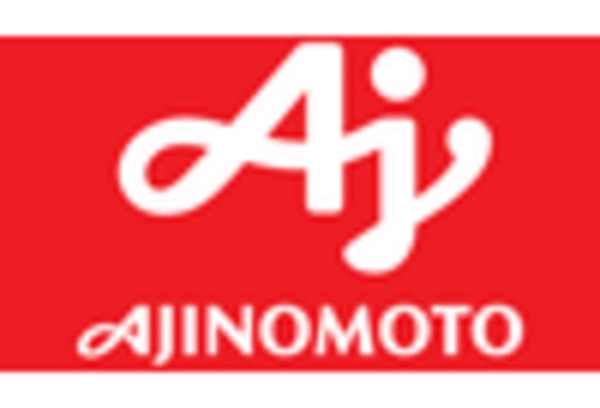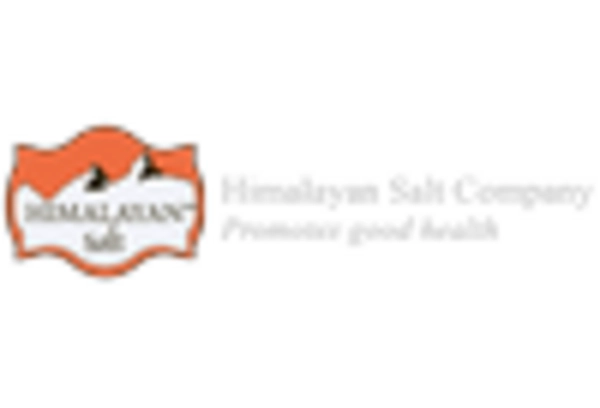Expansion of Retail Channels
The expansion of retail channels has emerged as a crucial driver for the Iodized Salt Market. With the proliferation of supermarkets, hypermarkets, and online platforms, consumers now have greater access to iodized salt products. This increased availability is particularly beneficial in urban areas, where consumers are more likely to purchase packaged goods. Recent statistics indicate that the retail sector for iodized salt has grown by approximately 15% in the last two years, reflecting changing consumer shopping habits. As retail channels continue to diversify, the Iodized Salt Market is poised for further growth, catering to a broader audience and enhancing product visibility.
Government Regulations and Initiatives
Government regulations play a pivotal role in shaping the Iodized Salt Market. Many countries have implemented mandatory iodization programs to combat iodine deficiency, which has resulted in a significant increase in the production and consumption of iodized salt. For instance, legislation in several nations mandates that all table salt be iodized, thereby ensuring that the population receives adequate iodine levels. This regulatory framework not only supports public health initiatives but also stimulates market growth. The Iodized Salt Market is expected to benefit from ongoing government efforts to promote iodized salt consumption, as these initiatives are likely to enhance awareness and accessibility.
Technological Advancements in Production
Technological advancements in production processes are significantly impacting the Iodized Salt Market. Innovations in iodization techniques and quality control measures have enhanced the efficiency and safety of iodized salt production. For instance, the introduction of automated iodization systems has improved consistency in iodine levels, ensuring that products meet health standards. Additionally, advancements in packaging technology have extended shelf life and maintained product integrity. As these technologies continue to evolve, they are likely to drive down production costs and improve product quality, thereby fostering growth in the Iodized Salt Market. The integration of technology is expected to play a crucial role in meeting the increasing demand for iodized salt.
Increasing Demand for Nutritional Supplements
The rising awareness regarding nutritional deficiencies has led to an increased demand for iodized salt in the Iodized Salt Market. Iodine deficiency remains a public health concern in various regions, prompting governments and health organizations to advocate for the consumption of iodized salt. This trend is particularly evident in developing countries, where the prevalence of iodine deficiency disorders is higher. According to recent data, the consumption of iodized salt has increased by approximately 20% in these regions over the past five years. As consumers become more health-conscious, the demand for iodized salt as a dietary supplement is likely to continue growing, thereby driving the Iodized Salt Market forward.
Rising Popularity of Natural and Organic Products
The growing trend towards natural and organic products is influencing the Iodized Salt Market. Consumers are increasingly seeking products that align with their health-conscious lifestyles, leading to a surge in demand for organic iodized salt. This shift is driven by a desire for cleaner labels and minimal processing, as consumers become more discerning about the ingredients in their food. Market data suggests that organic iodized salt sales have increased by approximately 30% over the past three years. This trend indicates a potential shift in consumer preferences, which could reshape the Iodized Salt Market as manufacturers adapt to meet these evolving demands.


















Leave a Comment